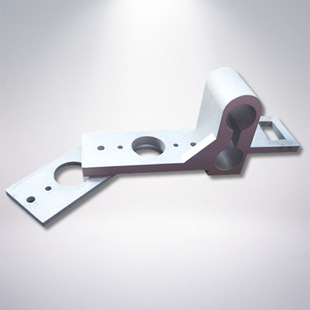In today’s vowin.cn' target='_blank'>product design and development set-up, pictures, and models are not enough to communicate the design specifications of a product. There are hundreds of details about how a product will look and work. The good news is there are different types of vowin.cn' target='_blank'>rapid prototyping approach designers can choose from to create mockups.

Rapid prototyping process of creating a 3D representation of the design. It will help the team of users, stakeholders, designers, and developers to evaluate the product. By doing this iteratively and rapidly, early in the process. Giving enough time for designers to improve product design. It also reduces the need for changes during product development.
The Key to Successful Prototyping
The prototypes can range from simple products to interactive simulations that function and look like the final products. The key to a successful rapid prototyping process is the response to the feedback from stakeholders to the prototype. Quick improvements on the prototype are necessary for reevaluation until the final product is decided upon.
Another key to successful prototyping is the prototyping approach itself. Rapid prototyping presents different options and approaches to the design team. It also helps facilitate discussion through visual representations rather than merely pictures and words.
This leads to a common understanding with everybody involved and reduces risks and missed opportunities. That results in not only a better design but a faster design and development process.
The Processes Involved in Rapid Prototyping
In rapid prototyping, the prototypes are often a fully functional version of the design. However, they are not meant to be the final product. Instead, its role is to help visualize and have feedback on the user’s experience of the final product.
With the function of rapid prototyping in mind, there are a few key issues that product developers have to consider before they begin with any prototypes. Here they are:
What Should Be Prototype
The designs that require prototyping are those with complicated interactions, changes in design, and new functions. Product developers have to consider the improvements from the product experience, introduction of new features, or representation of the design.
Quantity of Prototypes
The general rule to follow is 80:20 law. Consider that 20% of the product will be used in testing 80% of the time and that its key functions will be the priority of the users. Another thing to remember when determining the number of prototypes is its role. The point of rapid prototyping is to show the stakeholders how a design will look like.
Planning the Prototype
A prototype is not built on a single reiteration and that it’s built upon many changes. The best approach to good prototyping is to create a prototype based on the general design and then go into the smaller details of the design. With many iterations on the design going forward, the consequent steps will complete the process.
Choosing the Suitable Fidelity
When we say fidelity in rapid prototyping, it means how the prototype closely bears a resemblance to the final product. There are plenty of dimensions for fidelity and the prototype can lie anywhere in this spectrum of dimensions.
The selection of the right fidelity will depend on the design process and the purpose of the prototype. It could be any of the following:
*Low Fidelity – This is the fastest way to prototyping is sketching. There are no special tools or skills required here as it’s merely sketching on paper. This approach is mostly used in the early stages of design. It can be a quick way to produce mock-ups of the design and concept while getting feedback from the stakeholders. This type of prototyping is ideal for use in brainstorming and conceptualizing a product.
Medium Fidelity – Here, computer-based tools are introduced to demonstrate the product. With the software, the colors and styles are visualized. Users will view it as a draft or work in progress. What is amazing with medium fidelity is how fast the prototype can be made with the use of templates, stencils, and other elements.
*High Fidelity – This is the most ideal prototype because it is the most realistic and sometimes mistaken as a final product. However, they are usually time-consuming. Thanks to the different options of prototyping, time is no longer an issue.
Summary of Rapid Prototyping Process
Overall, the rapid prototyping process has multiple iterations, but it is a three-step process and that includes:
1. Prototype – In this step, the process converts the description of the designer into mock-ups integrating the user’s experiences and some of the best practices.
2. Review – Here the prototype is shared with the stakeholders and evaluates it according to expectations and needs.
3. Refine – Based on the feedback on the prototype, the areas for improvement are identified and reviewed.
The rapid prototyping process is evolving and undergoes multiple iterations until the final prototype is finalized and given for product manufacturing.


